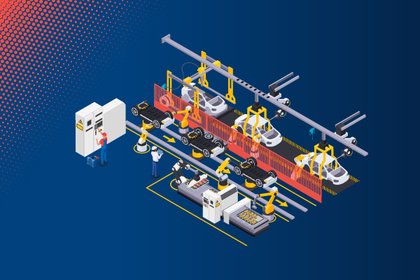Getting Everyone on Board – Inclusive Language in Companies
The question of how to portray people in our language is a hotly debated topic. Opinions range from “woke” rules on language to controversial remarks about the “language police”. In this blog you’ll learn how companies can deal with gender and inclusive language. We also look at an interesting practical example in an interview.

Why does language have to address gender and diversity? Isn’t it enough to have legal regulations that ensure no one is discriminated against? The reason is simple: Language has an impact! It creates images and interconnections. Language not only depicts reality, it also influences how we see reality. And it can convey how we see the world, even subconsciously.
Addressing everyone with inclusive language
At the same time language is often slow to change, so it often portrays a world that no longer exists in that form. Likewise, it doesn’t take into account new developments that have long since become the norm. Germany’s General Equal Treatment Act (AGG) lists six categories of diversity:
- Gender
- Sexual identity
- Ethnic origin
- Age
- Disability
- Religion or belief
Other institutions such as the European Commission of Human Rights also include further aspects, such as a person’s financial circumstances. Inclusive language is intended to ensure that the perspectives and needs of all people are given equal consideration.
The impact of language on image
For companies, the way we use language isn’t just a question of social responsibility. Inclusive language also has an economic component. Gen Z young adults in particular take an especially diverse view of gender identity and almost a third of them do not consider themselves heterosexual. Companies that don’t use gender-inclusive language will immediately appear out of touch to this target group. They run the risk of putting themselves at a disadvantage when searching for young talent; the messaging won’t land right with customers so they will opt for a competitor product. The company’s culture suffers, the workforce is dissatisfied – and the consequences have a far-reaching economic impact.
Gender-inclusive language is more than pronouns
Most of us think we understand what constitutes gender-inclusive language – avoiding gender-specific terms and using neutral pronouns. But gender-inclusive language also extends beyond this to a more intentional way of using language that reflects the attitudes of a company. The following aspects are relevant here:
- Discriminatory words:
The aim here is to avoid terms that create imbalances in how people’s value is perceived, for example “cleaning lady” or “manpower”. - Stereotypes:
Considering this aspect can help companies avoid words and images that could reinforce outdated stereotypes, such as the man going out to work while the woman gets the children ready for school.
Strategies for gender-inclusive language include steering clear of problematic language content as well as making other gender identities visible if our language hasn’t created space for them thus far.
Practical example: How Eurocom and Kaleidoscope introduced inclusive language
In light of all these factors, many companies are currently looking at how they can take responsibility in communications with their target groups and how to work their way through the maze of linguistic possibilities around inclusivity. Dr. Simone Burel from linguistic consultancy LUB Mannheim and Anita Wilson, CEO of Kaleidoscope and Eurocom Translation Services, explain how they approached this topic together in an interview.
I’m going to start by playing devil’s advocate: Is inclusive language something we really need?
Simone Burel: We absolutely do. This isn’t just a trend or an ideology. There’s solid scientific evidence to show that inclusive language works. Language focuses our attention and creates the world we live in in our heads. So if our language isn’t inclusive, we are ignoring parts of society.
And what impact does that have?
Simone Burel: It has a number of very different effects. Studies show, for example, that children feel more careers are within their reach when female job titles are used. Or in the case of job applications, more women apply when the post is explicitly written to address women. And they are also recognized as being more capable and are therefore hired more often.
Anita Wilson: Many target groups feel that they are truly addressed and valued when gender-appropriate language is used. Higher levels of education and income track with higher expectations for gender-appropriate language – regardless of gender. This is even more evident among young people, where more than 56 percent of 18 to 24-year-olds consider gender-neutral language to be important. Without inclusive language, our communications won’t have the desired impact with our audience.
Are gender-neutral language and inclusive language the same thing?
Simone Burel: No, gender-neutral language is just one aspect of inclusive language. Besides issues around gender identity, this also involves, for example, not perpetuating racist or colonialist stereotypes or excluding people with physical or mental disabilities. Ultimately, inclusive language is about considering people in all their diversity, as stipulated, for example, by the General Equal Treatment Act or Protocol No. 12 to the European Convention on Human Rights.
Why did Kaleidoscope and Eurocom decide to start using inclusive language?
Anita Wilson: I had been aware for some time that without inclusive language, we might not be reaching our target groups or, in the worst case, even upsetting them. So it made sense to me that we, as an innovative company, should take action. Inclusive language has an impact both internally and externally, so it’s equally important for employer branding as it is for team communication. And because we work in language services, inclusive language is of course an attractive component in our portfolio as well.
So what happened next?
Anita Wilson: I knew the project would be challenging, because not everyone in the company was immediately enthusiastic about the idea, of course. Inclusive language is unfamiliar and takes some effort at first. At the end of the day, I wasn’t sure where to start with all the types of content and communication platforms we have in our company.
So I was really happy when I met Simone. We felt confident working with her because she brings a knowledge of linguistics together with in-depth expertise on inclusive language. And it also quickly became clear that she really understands our industry.
Simone Burel: For my part, I was really pleased to receive Eurocom’s inquiry because they also act as multipliers. If they are using inclusive language in their company, then their customers’ companies are as well.
I’ve been working in the world of technical communication and translation for some time now, which also includes partnering with a provider of controlled speech software. So I’m familiar with the issues and challenges in this field.
What approach did you take exactly?
Anita Wilson: We started by looking for people in our company who were also interested in this topic. We then attended a workshop at LUB Mannheim, where we learned lots of things that were new to us. This also gave us some important insights, which we incorporated into an implementation plan. After that, we got to work with the implementation.
That sounds simple. But it still must have been a lot to do.
Anita Wilson: The first step was putting together a style guide and other supporting documents. We then moved on to our internal termbase and made adjustments there with inclusive language in mind. We also looked for testing tools and technological support. There are a number of options out there, such as genderapp.org.
This gave us the framework for the whole initiative. Next, we tackled the different content types in the company. There was quite a lot to look at here too, including job advertisements, case studies, manuals, and so on. So we started by making a list of everything and then set priorities according to importance and how much work was expected. Finally, it was time to implement our plan.
Have you already finished the implementation stage?
Anita Wilson: One important aspect for us was getting the terminology and testing tools up and running, which went very well. Right now, we are in the process of expanding one of our in-house tools to include inclusive language checks. This is a huge help in terms of revision and implementation. But there’s still a lot to do, of course.
Simone Burel: Experience has shown that introducing inclusive language isn’t a project that will be completed at some point. It’s an ongoing process, because you’re always creating new content or bringing new people on board. The important thing is supporting the process, for example by appointing ambassadors for inclusive language in the company or setting up a center of excellence that demonstrates best practices.
One last question: Was it all worth it?
Simone Burel: I’ve been really impressed to see what Eurocom has achieved in a short space of time. From my point of view, the answer is definitely yes.
Anita Wilson: I can only agree. Our communication has become much more transparent, and that’s something we’re also hearing back from customers and other members of the public. We’ve made a significant expansion to our portfolio, and our customers benefit from the expertise we have built up as part of a global network. We’re really happy that we tackled the challenge of inclusive language – and made it happen.



